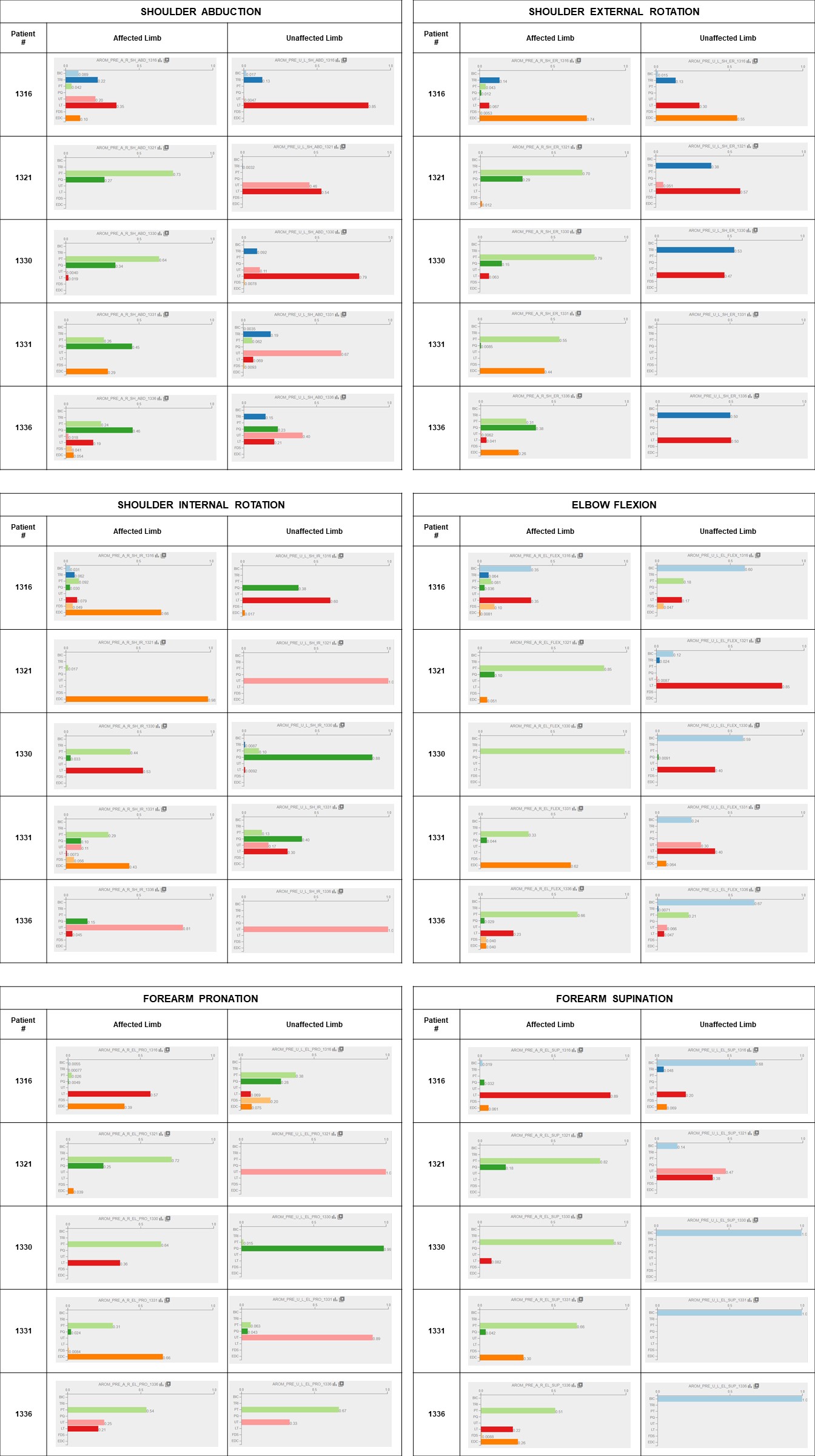Trapezius Muscle Activity in Children and Adolescents with Chronic Obstetrical Brachial Plexus Birth Palsy
Jasmine Lin, MS, Alex Lin, BA, Brittany Ward, BS, Haripriya S. Ayyala, M.D., Ashley Ignatiuk, MD and Alice Chu, MD, Rutgers-New Jersey Medical School, Newark, NJ
INTRODUCTION
The trapezius muscle plays an important role in normal subjects, yet the spinal accessory nerve is an often-used donor nerve in patients with obstetrical brachial plexus birth palsy (OBPBP). This study examined the role of the trapezius in children with upper trunk OBPBP during movements of the shoulder, forearm and elbow. As denervation of the lower portion of the trapezius alone is possible, the upper and lower trapezius (UT and LT) were examined separately.
METHODS
Five patients, mean age 11.2 years (7.6 to 18.1 years), with OBPBP underwent bilateral upper extremity motion analysis. Subjects were evaluated with 3-dimensional motion analysis, 16-channel electromyography, and video monitoring. Data was recorded for shoulder abduction, external rotation, internal rotation, elbow flexion, forearm supination, and forearm pronation. Analysis was performed using MOTIONBROWSER, a novel analytic workflow, to compare heterogeneous muscle bundles and extract significant muscle activities through semi-automated comparisons with comprehensive visualization techniques and an interactive user interface.
RESULTS
In unaffected side shoulder abduction and external rotation, LT was primarily activated with secondary UT activation in shoulder abduction. Affected side PT and PQ were primarily activated. In unaffected side shoulder internal rotation, variable activation of PQ and UT were seen; on the affected side, variable activation of EDC, PT, and LT were seen. In unaffected side elbow flexion, BIC and LT were primarily activated; on the affected side, PT was primarily activated. In unaffected side forearm pronation, variable combinations of PT, PQ, and UT were seen; on the affected side, PT was primarily activated. In unaffected side forearm supination, BIC was primarily activated; on the affected side, PT was the primary.
Individual subjects had disproportionate UT or LT activation: for shoulder internal rotation, one patient demonstrated 0.92% vs. 53% LT activation on the unaffected vs. affected sides. For elbow flexion for two patients, LT activation was 17% and 4.7% in the unaffected sides vs. 35% and 23% on the affected sides. For forearm pronation, two patients did not activate UT in their unaffected side, but LT was strongly activated (57% and 36%) in their affected sides.
CONCLUSIONS
Both UT and LT have important compensatory roles during motion in patients with OBPBP. Future evaluation of the spinal accessory as a donor nerve transfer during obstetrical brachial plexus is necessary.

Back to 2020 Abstracts
